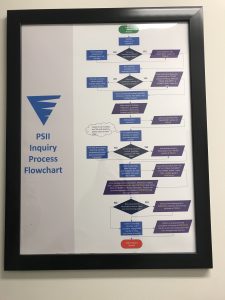
By Katie, Alexa and Lauren M.
How might we incorporate photography into the classroom?
The benefits to learning photography are boundless and multifaceted. By tapping into this in our teaching practices, we can enhance our student’s educational experiences.
Integrating photography does not have to be done through the lens of art education. Just like other artistic mediums, we can look at photography as a tool to enhance learning in other areas.
Below are some examples of how to actualize this for different age groups
- Creating a photography scavenger hunt- where students are tasked with documenting objects in their surroundings that relate to a certain unit or theme. (grades K-4)
- In the instruction of other languages (such as French,) have children take photos of everyday objects around the school or in their homes. Then have them determine the name for the object in a second language, and write a sentence about it (grades 2-5)
- Take a class nature walk and task each student with taking a picture of an object they find interesting along the walk. Have them write a story about the object; where it came from, how it ended up where it was found, ect. (grades 3-7)
- Have each child create a blog, and respond to weekly prompts with text and photos that they take on their own (grades 5-8)
Implementing photography into the classroom may be easier said than done- as the logistics of tasking children with taking photos can become complicated. Even in an age where smartphones are commonplace and equipped with high resolution cameras, it is unrealistic to assume students have access to this high end technology at home. Regardless of the socio-economic restrictions involved, many adults are apprehensive (to say the least) when it comes to allowing young children access to their personal technology. Therefore, it is important to teach proper camera care and etiquette before beginning photography projects with younger elementary students.
In addition, it is important to teach students to be respectful when it comes to the photos they are taking. Let them know they must always ask for permission to take photos of somebody else, and that they should be mindful of the photos they take. Although we live in an age of smartphone cameras where people take dozens of photos of the same scene or object, having children put thought into what they choose to take photos of will lead to higher quality work.
All things considered, photography is an amazing tool to explore and incorporate into classroom instruction as elementary teachers. By being aware of the repercussions and cautions to take before implementing photography units and lessons, we can help our students grow behind the lens of a camera.
Summary
The article The Benefits of Photography:Let kids use your camera explores why it is important for children to use cameras and to explore photography from a young age.
Photography can be a way for children and their families to connect. Stories from the past can be shared and help bond families and friends together. It is important for children to learn how to use a camera and focus it, so that they can begin building their own memories to be shared in the future. It gives them a voice to show their day from their perspective.
Photography is also an easy way to show students how to be creative. They can begin looking at the world and how you can see it differently by adjusting your angle and lighting. Through different challenges and projects, students can experiment with composition and photography techniques.
The big question is what students should be using to capture their photos? It is not necessary to purchase a super nice camera. You can use a phone, which can have different apps created for kids photography, or you can use a disposable or point and shoot camera.
Over all, Photography is a place for students to explore their creative voice, and discover the world from their perspective. It can help students, teachers, and families bond during the process and for years after. Photography also helps with students fine motor skills as they grow and become more precise with their work. It can offer an important time for all of this to happen, as it may not be experienced otherwise.
Analysis
Photography has become ever more present in society with an increase in accessibility to cameras in students’ lives. It is something that is not a necessary skill, as that may be leaning into the social media need to overshare your life, but it is something that approached from the side of an artistic outlet or as a way to preserve a memory and to share a story, can be an educational tool that bridges the gap between the outdoors, technology and education.
The article talks about taking pictures of nature as a way to curate composition skills. Utilizing photography in an outdoor ed setting can hit two of the most pushed concepts of modern curriculum. Providing outdoor time in an autonomous, artistic and literacy filled experience helps students sense of mastery and independence in the classroom.
Providing photography experience safely can help students learn the rules and etiquette that comes with it. As stated in the article, teaching about the consent of taking someone’s picture and how that picture is shared is really important in the age of social media that learners will enter in their adolescent life. Teaching these skills while also teaching about the art of photography, and the digital literacy that comes with it allows for multifaceted lessons.
Utilizing photography in a cross-curricular way by telling the stories related to the pictures taken, is a really interesting and memorable way to help develop listening skills, storytelling skills, and digital literacy skills. Overall, there are many benefits to teaching photography, but it needs to be done in a way that frames it at an age-appropriate level where it is not teaching students how to be social media influencers but how to be storytellers through the lens.








